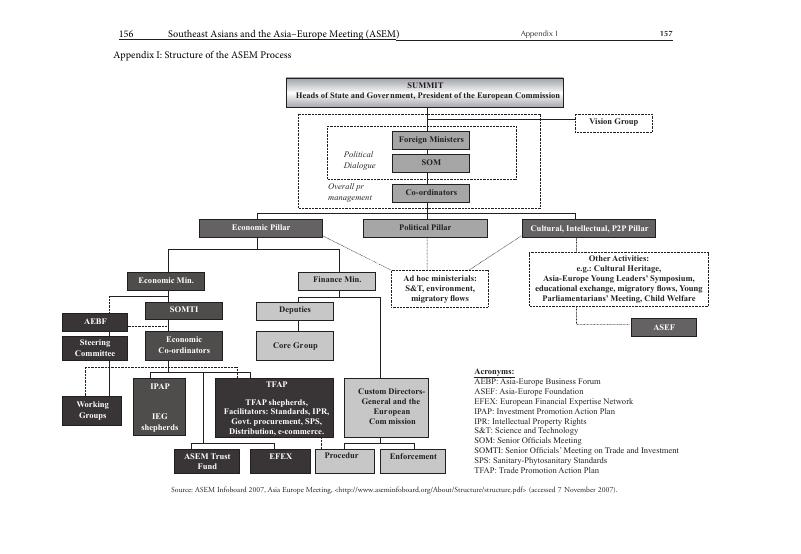Book contents
- Frontmatter
- Dedication
- Contents
- List of Illustrations
- Foreword
- Acknowledgements
- Abbreviations
- Map I
- Map II
- Introduction
- 1 ASEM and the Development of an Asian Regional Identity
- 2 ASEM and Southeast Asian Countries' Foreign Policy: Case Study: The Issue of Myanmar in the 2004 ASEM Enlargement
- 3 Southeast Asians and the Informality of the ASEM Institution
- Conclusion: ASEM Has Delivered Significant Benefits to Southeast Asian Countries
- Epilogue: Southeast Asia and ASEM after 2008
- References
- Appendices
- Appendix I Structure of the ASEM Process
- Appendix II The Development of the ASEM Process, 1996–2010
- Appendix III Agenda and Issues around ASEM Summits, 1996–2010
- Index
- About the Author
Appendix I - Structure of the ASEM Process
from Appendices
Published online by Cambridge University Press: 21 October 2015
- Frontmatter
- Dedication
- Contents
- List of Illustrations
- Foreword
- Acknowledgements
- Abbreviations
- Map I
- Map II
- Introduction
- 1 ASEM and the Development of an Asian Regional Identity
- 2 ASEM and Southeast Asian Countries' Foreign Policy: Case Study: The Issue of Myanmar in the 2004 ASEM Enlargement
- 3 Southeast Asians and the Informality of the ASEM Institution
- Conclusion: ASEM Has Delivered Significant Benefits to Southeast Asian Countries
- Epilogue: Southeast Asia and ASEM after 2008
- References
- Appendices
- Appendix I Structure of the ASEM Process
- Appendix II The Development of the ASEM Process, 1996–2010
- Appendix III Agenda and Issues around ASEM Summits, 1996–2010
- Index
- About the Author
Summary

- Type
- Chapter
- Information
- Southeast Asians and the Asia-Europe Meeting (ASEM)State's Interests and Institution's Longevity, pp. 156 - 157Publisher: ISEAS–Yusof Ishak InstitutePrint publication year: 2014

